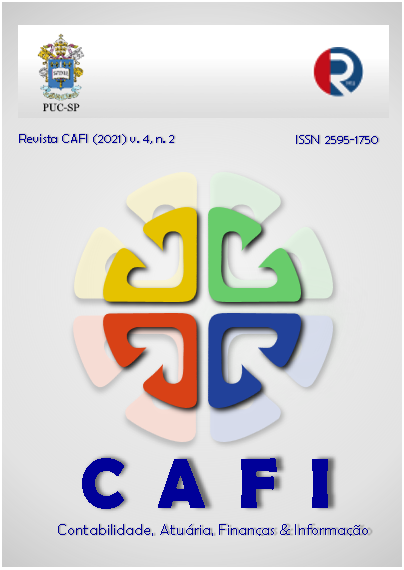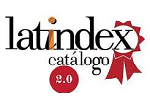Esportes eletrônicos no Brasil e na Coréia do Sul: Um Estudo Comparativo Baseado no Modelo do Diamante de Porter
DOI:
https://doi.org/10.23925/cafi.v4i2.52068Palavras-chave:
eSports, Porter's Diamond, National CompetitivenessResumo
Apesar de ser uma indústria nova o setor de eSports apresenta crescimento exponencial e compete, com força, com o mercado de entretenimento. O Brasil é um player recente ao contrário da Coréia do Sul um player global. O Objetivo desta pesquisa é fazer uma análise entre Brasil e Coréia do Sul utilizando o Modelo do Diamante de Porter e suas condições de fatores, da demanda, das indústrias correlatas e suporte bem como da rivalidade entre empresas em ambos os países. Observou-se ainda uma distância muito grande entre a superioridade da Coréia do Sul sobre o Brasil o que inclui uma dinâmica competitiva vibrante, um consumidor exigente, diversas indústrias de apoio e do apoio do governo. As contribuições gerenciais são destacadas e os possíveis vieses do método utilizado.
Referências
Avrichir, I.& Caldas, M.P. (2001).. Discussão da validade da teoria de competitividade nacional de Porter a partir do caso Embraer, In Anais da ENANPAD, Campinas.
Barcellos, R.L. (2017). Suporte à tomada de decisão estratégica no âmbito de eSports: o caso do league of legends. Repositório UFRGS.
João, B. N. et al. (2009). Competitividade do setor exportador de café no Brasil e na Colômbia: Uma Extensão do Diamante de Porter. Patrimônio: Lazer & Turismo, v. 6, n. 7, p. 119-140
Dunning, J.H. (1992). The competitive advantage of countries and the activities of transnational corporations. Transnational Corporations, Vol. 1. N1, p. 135-168.
Dunning, J.H. (1993). Internationalizing Porter‘s diamond. Management International Review; Wiesbaden, Vol. 33. N. 2, 7-15
ESports (Esportes Eletrônicos): O que é, História e Games. Fundação Instituto de Administração – FIA. Disponível em: https://fia.com.br/blog/esports/. Acesso em: 05/04/2020.
História dos eSports. (2020). Confederação Brasileira de eSports. Disponível em: <http://cbesports.com.br/esports/historia-do-esports/>. Acesso em: 30/04/2020.
Hamari, J.; Sjoblom, M. (2017). What is eSports and why do people watch it? Internet Research, 27, n. 2, 211-232
Ikenami, R. K.; lipovaya, V.; Da Costa, P. G. F.; Silva, E. R. et al. (2020). A method proposal to support decision-making in unstable ecosystems: application in the Brazilian eSports ecosystem case. International Journal of Technology Management, 82, n. 2,172-195
Parshakov, P.; Naidenova, I.& Barajas, A. (2020). Spillover effect in promotion: Evidence from video game publishers and eSports tournaments. Journal of Business Research, 118, 262-270.
Pizzo, A. D.; Baker, B. J.; Na, S.; Lee, M. A. et al. (2018). eSport vs. Sport: A Comparison of Spectator Motives. Sport Marketing Quarterly, 27, n. 2,108-123.
Porter, M.E. (1980). The competitive advantage of nations. New York: The Free Press.
Porter, M.E. (1989). A vantagem competitiva das nações. 7. ed. Rio de Janeiro: Campus.
Porter, M.E. (2001). A Vantagem Competitiva das Nações in Competição: Estratégias Competitivas Essenciais. São Paulo: Campus
Salguero, Justino. (2010). Competitividade e qualidade do mercado de café no Brasil: uma análise por meio do modelo do diamante de Porter. 2010. 128 f. Dissertação (Mestrado em Organização e gestão) - Universidade Católica de Santos, Santos, 2010.
Sebastião, D.C. & Arica, J. (2006). Uma análise comparativa entre sistemas de inovação e o diamante de Porter na abordagem de arranjos produtivos locais. Rio de Janeiro.
Silva, C.A.C.; Martins, C. A.P.& João, B.N. (2003). Regime Automotivo e Competitividade da Indústria Automobilística Brasileira. In Anais SIMPOI, São Paulo.
Tavares, M. C. & Cerceau, J. (2001). Competição, Cluster e o Modelo Diamante: um Estudo Exploratório com Empresas Brasileiras. Anais ANPAD.
Vlados, C. (2019). Porter‘s Diamond Approaches and the Competitiveness Web. International Journal of Business Administration Vol. 10, No.5
Wagner, M. (2006). On the scientific relevance of eSport, in Proceedings of the 2006
International Conference on Internet Computing and Conference on Computer Game
Development, CSREA Press, Las Vegas, Nevada, 437-440.
Weiss, T.& Schiele, S. (2013). Virtual worlds in competitive contexts: Analyzing eSports consumer needs. Electronic Markets, 23, n.4, 307-316.
Downloads
Publicado
Como Citar
Edição
Seção
Licença
Declaração de Direito Autoral
Autores mantém os direitos autorais e concedem à revista o direito de primeira publicação, com o trabalho simultaneamente licenciado sob a Licença Creative Commons Attribution que permite o compartilhamento do trabalho com reconhecimento da autoria e publicação inicial nesta revista.
Declaração de Privacidade
Os nomes e endereços informados nesta revista serão usados exclusivamente para os serviços prestados por esta publicação, não sendo disponibilizados para outras finalidades ou a terceiros.









